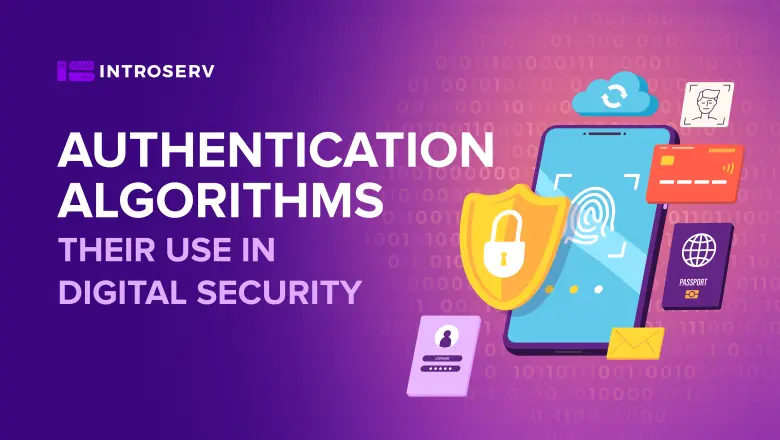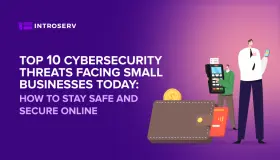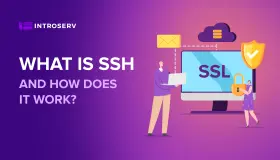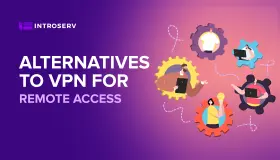
Digital Security and One-Time Password Algorithms
In a computer system, the need for digital security cannot be overstated. One essential aspect of digital security is the use of authentication algorithms and authorization codes. Cybersecurity breaches can cause significant financial loss and identity theft, making it necessary to implement strong security measures to safeguard digital assets.
This guide focuses on Open Authentication (OATH) methods such as OTP, TOTP, HOTP, and Multi-Factor Authentication (MFA). We will explore the differences between these methods and how they help to secure a computer system.
Introduction to Authentication Methods
The process of verifying the identity of a user or entity is called authentication. It is a crucial element in digital security that ensures authorized access to sensitive information or resources. There are different types of authentication methods available, including single-factor authentication, two-factor authentication, and multi-factor authentication.
Single-factor authentication, like password-based authentication, is the most common method of authentication. In this approach, users provide a unique username and password combination to gain access to a system or network. However, this method is vulnerable to security breaches if the password is weak or if it is stolen or hacked.
To address the limitations of single-factor authentication, strong authentication, also known as two-factor authentication, has been developed. This approach involves the use of additional authentication factors, such as a dynamically generated one-time password (OTP), time-based OTP (TOTP), or HMAC-based OTP (HOTP), which provide an extra layer of security. These methods generate automatically generated passwords to authenticate users, which makes it more difficult for attackers to gain unauthorized access.
Multi-factor authentication (MFA) is another authentication method that uses a combination of two or more authentication factors, such as a password, a fingerprint scan, or a facial recognition scan, to provide an extra layer of security. This method is more secure than single-factor authentication and two-factor authentication because it requires multiple pieces of evidence to verify the user's identity, making it more difficult for attackers to gain unauthorized access.
In summary, all these authentication methods aim to provide secure user experiences in computer systems and digital security. However, each method has its own strengths and weaknesses, and organizations should carefully evaluate their security needs and risks to determine the most appropriate authentication method to use.
One-Time Password (OTP)
What is OTP?
An OTP is a password valid for only one login session or transaction, on a computer system or other digital device. It is typically generated automatically by an authentication server and sent to the user via SMS or email. The user then enters the OTP on the login page to gain access to the system or complete the transaction.
OTP is a cryptographic hash, which means it is generated by a mathematical algorithm that takes a user name, a secret key, and the current time as inputs. The algorithm then generates a unique password that is valid for only one session or transaction.
Types of OTP
There are two main types of OTP:
1. Time-based OTP (TOTP)
2. HMAC-based OTP (HOTP)
What is TOTP?
TOTP stands for Time-based One-Time Password. It is a type of OTP that generates a temporary, one-time password based on the current time and a cryptographic hash function. This password is only valid for a short period, typically 30 seconds, after which it becomes invalid and a new TOTP is generated. Because the code is only valid for a short period, it cannot be used again if intercepted by a hacker.
The main difference between OTP and TOTP is that OTP is a static password that is valid for a single login session, while TOTP is a dynamic password that changes every 30 seconds. OTPs can be vulnerable to replay attacks, where a hacker intercepts the password and reuses it at a later time. TOTP eliminates this vulnerability by ensuring that each password is unique and only valid for a short period.
TOTP is generated by a software application on a user's smartphone or computer. The TOTP algorithm is often used in conjunction with an authentication app, such as Google Authenticator or Authy.
What is HOTP?
HOTP stands for HMAC-based One-Time Password. It is a type of OTP that generates a unique password every time a user logs in, making it more challenging for attackers to gain unauthorized access. The password generated by HOTP is valid only once and cannot be used again, providing a higher level of security for the user's account.
OTP and HOTP are both types of one-time passwords, but there is a key difference between the two. OTPs are generated using an algorithm that combines a secret key and a random value. The result is a unique, one-time password that can only be used once. In contrast, HOTP uses a counter that increments with each use of the password. This creates a sequence of unique passwords that are harder to predict or reuse.
Use cases & examples of OTPs
OTP is used in two-factor authentication (2FA) and single-factor authentication (SFA) systems. In a 2FA system, the user is required to provide two forms of authentication: something they know (like a password) and something they have (like a mobile device to receive OTPs). In an SFA system, the user only needs to provide the OTP as a form of authentication. OTP is also used in transaction login and login session mechanisms, where the user is required to provide a new password for every session or transaction. This prevents reusing old passwords, which can be a security risk.
OTP is commonly used in situations where an additional layer of security is required, such as:
- Online banking: Banks use OTP to authenticate the user's identity when logging into their account or making a transaction.
- E-commerce: Online retailers use OTP to verify the customer's identity when making a purchase or entering sensitive information such as credit card details.
- Remote access: Companies use OTP to authenticate the identity of employees who need to access sensitive data or systems from remote locations.
- Healthcare: Healthcare providers use OTP to secure electronic medical records and ensure that only authorized personnel have access to the patient's information.
Benefits of OTPs
- Increased Security: OTP provides an additional layer of security, making it harder for unauthorized users to gain access to sensitive information.
- Enhanced User Experience: OTP eliminates the need for users to remember complex passwords or store them in insecure locations. This makes the login process simpler and more convenient for users.
- Reduced Risk of Fraud: OTP ensures that each login attempt is unique, preventing hackers from reusing stolen credentials.
- Cost-Effective Solution: Implementing OTP can be an affordable solution for businesses looking to improve their security measures, as it does not require costly hardware or software installations.
Disadvantages of OTPs
While OTP is a secure authentication method, it does have some disadvantages. One major disadvantage of OTP is that it can be vulnerable to Distributed Denial-of-Service (DDoS) attacks. Hackers can flood the authentication server with login requests, overwhelming the system and causing it to crash. This can result in denial of access to legitimate users and can disrupt normal business operations. Additionally, if the OTP token or device is lost or stolen, it can be difficult to revoke and may require extra resources to manage. Finally, some users may find the added step of entering an OTP code to be inconvenient or time-consuming, leading to frustration and decreased productivity.
Summary about OTPs
In summary, OTPs are a widely used authentication method in digital security. They provide an additional layer of security to protect against cyberattacks such as phishing and credential stuffing. OTPs can come in different forms such as TOTP, HOTP, and SMS-based OTP, each with its advantages and disadvantages. However, the use of OTPs is not a silver bullet and must be used in combination with other security measures such as two-factor authentication, single sign-on, and encryption to provide comprehensive protection against cyber threats.
Multi-Factor Authentication (MFA)
What is Multi-Factor Authentication?
Multi-factor authentication is a security mechanism that requires users to provide more than one form of authentication to gain access to a system or application. The goal of MFA is to make it more difficult for unauthorized users to access a user's account, even if they know the password.
One of the key differences between OTPs and MFA is the number of factors used for authentication. OTPs rely on a single factor, typically a password that is valid for a single login session or transaction. MFA, on the other hand, requires at least two factors to authenticate a user's identity. These factors can include something the user knows, such as a password or PIN, something they have, such as a smartphone or token, or something they are, such as a fingerprint or facial recognition.
MFA works by requiring users to provide additional forms of identification before accessing their accounts. This can include biometric factors like fingerprints or facial recognition, hardware factors like smart cards or security tokens, or software factors like OTPs (One-Time Passwords) sent via SMS or generated by an app.
Once the user enters their username and password, they'll be prompted to provide one or more of these additional factors. For example, a user may be asked to scan their fingerprint or enter a code from an authenticator app on their smartphone. MFA reduces the risk of unauthorized access and strengthens the security of the authentication process.
Types of MFA
There are several types of MFA, including:
- SMS-based authentication: This method involves sending a one-time password to a user's mobile device via SMS. The user then enters this password to complete the login process.
- Software-based authentication: This method uses a software application installed on a user's smartphone or computer to generate a one-time password.
- Hardware-based authentication: This method uses physical devices such as tokens, smart cards, or USB drives to generate one-time passwords.
- Biometric authentication: This method uses physical characteristics such as fingerprints, facial recognition, or voice recognition to authenticate a user.
Use cases & examples
MFA is used in various industries, including healthcare, finance, government, and education. Some examples of how MFA is used in digital security include:
- Online banking: By requiring a second factor of authentication, such as a one-time password sent via SMS or generated by an app, banks can ensure that only authorized users have access to sensitive financial information.
- E-commerce: Retailers can verify that the person making the purchase is the legitimate cardholder by requiring a second factor of authentication, such as a biometric scan or a one-time code sent to a mobile device.
- Remote work: Companies use OTP to authenticate the identity of employees who need to access sensitive data or systems from remote locations preventing unauthorized access to corporate data.
- Cloud services: Cloud services such as Google Cloud, Amazon Web Services, and Microsoft Azure all offer MFA options to help protect sensitive data stored in the cloud, preventing unauthorized access and data breaches.
Advantages of MFA over OTP:
- Improved Security:MFA offers an extra layer of security compared to OTP. OTP only requires one factor of authentication, whereas MFA requires at least two factors. This means that even if an attacker obtains a user's password, they still need to provide additional authentication factors to access sensitive information.
- Flexibility: MFA allows for greater flexibility in authentication methods. OTP is typically limited to a one-time code sent via SMS or generated by an app, whereas MFA can include biometric authentication such as fingerprint or facial recognition, as well as hardware tokens or smart cards.
- Compliance: MFA is often required for compliance with industry regulations such as HIPAA for healthcare or PCI DSS for payment processing. Failing to implement MFA could result in hefty fines and legal repercussions.
Disadvantages of MFA compared to OTP:
- Cost: MFA can be more expensive to implement than OTP, especially for small businesses or organizations. MFA may require hardware tokens or smart cards, which can be costly to purchase and distribute to all users.
- Complexity: MFA can be more complex to implement and manage than OTP. It requires additional infrastructure, such as authentication servers, and may require specialized expertise to configure and maintain.
- User Resistance: Some users may resist MFA due to the extra steps required for authentication or concerns about the privacy of biometric data. This can lead to frustration and decreased productivity.
Summary about MFA
Digital security is more critical now than ever before, and multi-factor authentication is an essential component of securing sensitive data. By requiring additional authentication methods, MFA provides an additional layer of protection against attacks, making it much more difficult for unauthorized users to gain access. It is crucial to understand the importance of MFA and the different authentication factors to make informed decisions when it comes to securing digital assets. OATH-compliant solutions have become the standard for MFA, and organizations should consider adopting such solutions to ensure secure authentication.
What is the most used authentication method by our clients?
Based on our analysis of client authentication preferences, we have found that the majority prefer Multi-Factor Authentication (MFA) over One-Time Passwords (OTPs). This preference can be attributed to factors like the level of security required, ease of use, and compliance requirements.
Many of our clients operate in highly regulated industries that require strict adherence to security standards. In such cases, MFA provides an additional layer of security that meets the required standards. Despite being more time-consuming than OTPs, MFA offers a more secure and seamless experience for users.
Combining Single Sign-On (SSO) and secure File Transfer Protocol (sFTP) or FTP over SSL/TLS (FTPs) with MFA can enhance the security of digital systems. SSO simplifies the login process by allowing users to access multiple systems with a single set of credentials. By combining SSO with MFA, an additional layer of security is provided to meet the required standards.
Secure FTP, such as sFTP or FTPs, is useful for transferring files between systems securely. However, without proper access controls, it can pose a security risk. To limit the risk of unauthorized access or data leakage, implementing OTPs or MFA for sFTP or FTPs authentication is recommended.
Additionally, many of our clients value ease of use and user experience. While MFA may be more time-consuming than OTP, it offers a more seamless and secure experience for users. Our clients recognize the importance of balancing security and usability, and MFA allows them to do so effectively.
Conclusion
In conclusion, one-time passwords and other authentication algorithms are essential tools for ensuring digital security. As we have seen, there are several types of one-time password algorithms, each with its own strengths and weaknesses.
It is important to choose the right authentication method for your needs, taking into consideration the level of security required and the ease of use for your users. While two-factor authentication is a popular choice, there are other methods available, such as multi-factor authentication and biometric authentication.
The risks of DDoS attacks should also not be underestimated, as they can cause significant damage to a business or organization. It is crucial to stay vigilant and take measures to prevent these attacks, such as implementing firewalls, load balancers, and content delivery networks.
At INTROSERV, we offer a variety of digital security solutions, including dedicated, cloud, and virtual private servers with top-quality hardware and multiple security options. Our industry-leading Service Level Agreement and high uptime guarantee ensure that our customers receive the best support and customer service available 24/7.
By choosing INTROSERV for your digital security needs, you can have peace of mind knowing that your data and systems are secure and protected. Contact us today to learn more about our services and how we can help your business stay safe in the digital world.








